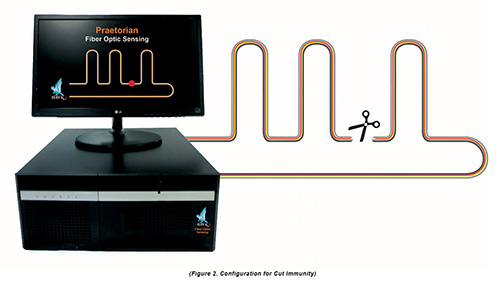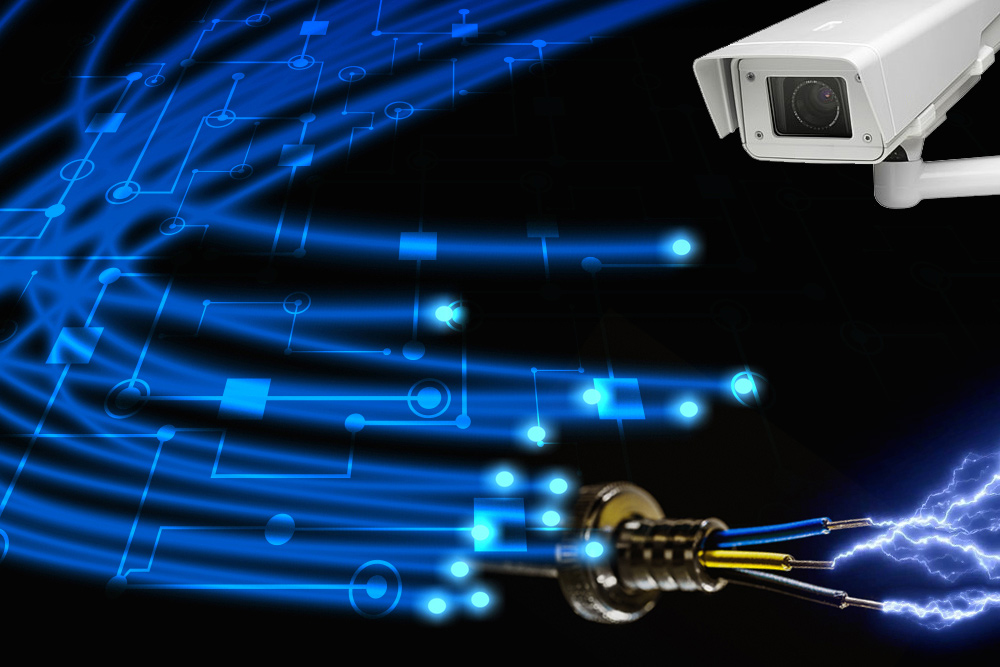The Ultimate Guide to Fiber Optic Safety Systems for Your Business
In a period where security worries are extremely important for services, recognizing the ins and outs of fiber optic innovation can be transformative. This overview details how incorporating fiber optic protection systems not just boosts data security however also supplies advantages like resistance to interference and real-time monitoring capabilities.
Recognizing Fiber Optic Technology

The core of a fiber optic wire consists of a thin glass or plastic center, bordered by a cladding layer that reflects light back right into the core. Single-mode fibers are created for long-distance transmission, while multi-mode fibers are ideal for shorter ranges, frequently utilized within buildings.
Optical fiber are not only faster but likewise more safe than typical circuitry. Their fundamental resistance to electro-magnetic interference and the difficulty of using the signal without discovery make them a favored choice for organizations prioritizing information stability and safety. As companies increasingly depend on protected and efficient interaction systems, recognizing fiber optic technology comes to be necessary for educated decision-making.
Key Benefits of Fiber Optic Safety
When thinking about safety alternatives for an organization, the benefits of fiber optic systems are specifically engaging. Fiber optic innovation uses remarkable data transmission rates and data transfer ability, making it excellent for managing high-resolution video feeds from surveillance cameras. This capacity makes sure that security employees obtain real-time data, boosting overall response times to possible safety hazards.
Furthermore, fiber optic cable televisions are inherently immune to electro-magnetic disturbance, which can jeopardize the honesty of typical copper-based systems. This resistance guarantees that the information transferred remains protected and undisturbed, offering a more trusted protection framework. Furthermore, fiber optics are much less at risk to physical damage, as they are made from glass instead than metal, minimizing maintenance costs and downtime.
An additional considerable advantage is the enhanced scalability of fiber optic systems. As service needs progress, fiber networks can be easily broadened to fit added safety tools without substantial overhauls to the existing facilities. Finally, fiber optic systems use enhanced cybersecurity features, consisting of encryption abilities that protect delicate information from unapproved access. Jointly, these benefits make fiber optic protection systems a durable choice for services seeking to improve their protection measures.
Installation Process and Considerations
Thinking about the intricacies included, the setup process of fiber optic safety and security systems requires careful preparation and implementation. The preliminary action entails a thorough website evaluation to recognize optimum areas for cabling and devices. This evaluation must take into consideration ecological aspects, existing framework, and potential vulnerabilities.

Furthermore, the installment must follow local building regulations and sector requirements. This might consist of coordinating with numerous stakeholders such as building managers, IT teams, and security workers to guarantee smooth combination with existing systems.
Post-installation, strenuous testing is needed to verify system performance and identify any kind of issues that might occur. By prioritizing these factors to consider throughout the setup procedure, services can ensure a robust and reliable fiber optic safety and security system that satisfies their details safety and security requirements.
Latest Advancements in Fiber Optic Safety
Current advancements in fiber optic technology have actually dramatically boosted the abilities of protection systems for companies. Among one of the most significant developments is the integration of fiber optic sensing units that can detect vibrations and invasions along the perimeter of a facility. These sensors give real-time monitoring, making it possible for quick action to possible breaches.
Furthermore, the growth of distributed fiber optic sensing modern technology permits the constant monitoring of large locations with a single fiber cord. This approach not only reduces installment costs however additionally boosts the reliability of monitoring systems by getting rid of the demand for numerous, separate sensors.
In addition, improvements in multiplexing strategies have actually allowed businesses to send vast amounts of data over fiber optic networks, enhancing the capacities of video security systems. High-definition video feeds can currently be sent out over fars away without loss of quality, guaranteeing that safety workers have access to clear and workable info.
Last but not least, using fabricated intelligence (AI) in combination with fiber optic systems is reinventing hazard discovery. AI formulas can evaluate information from fiber optic networks to recognize uncommon patterns or habits, permitting for official source positive safety and security steps. These developments collectively stand for a considerable jump onward in fiber optic safety innovation.
Choosing the Right System for Your Service
Choosing the suitable fiber optic safety and security system for your business is crucial for guaranteeing optimal defense and peace of mind. To make an educated choice, evaluate your specific protection demands, thinking about elements such as the dimension of your properties, the nature of your procedures, and potential susceptabilities.
Begin by evaluating the level of security called for; for instance, risky atmospheres may require advanced systems with incorporated monitoring and breach discovery abilities. Next, think about scalability; as your business expands, your protection system need to can expanding to suit raised needs without substantial overhauls.
Furthermore, explore the integrity and performance of numerous systems. Seek suppliers with well-known credibilities and customer testimonials that vouch for their service quality. It's also recommended to ask about the technology's compatibility with existing infrastructure, guaranteeing a seamless assimilation procedure.
Conclusion
To conclude, fiber you can find out more optic safety and security systems provide a robust service for boosting business security infrastructures. The integration of high-speed data transmission, resistance to electro-magnetic disturbance, and progressed tracking abilities considerably boosts overall security (fiber optic security system). By understanding the technology, identifying its advantages, and considering the setup process, organizations can make enlightened choices. The most recent developments additionally boost the effectiveness of these systems, making certain that organizations remain protected and adaptable in an go to these guys ever-evolving hazard landscape.